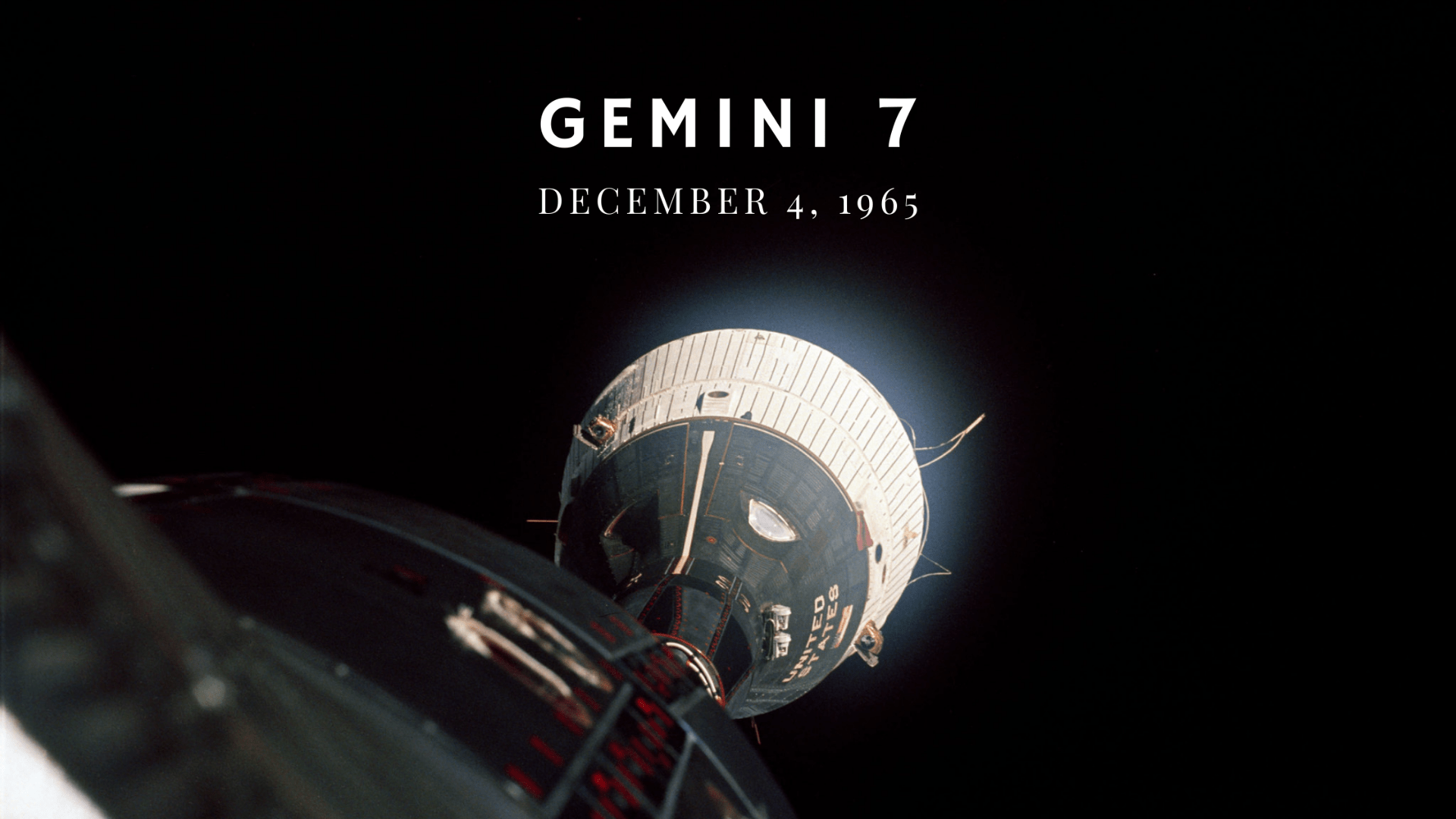
GEMINI 7: A SPACE RENDEZVOUS
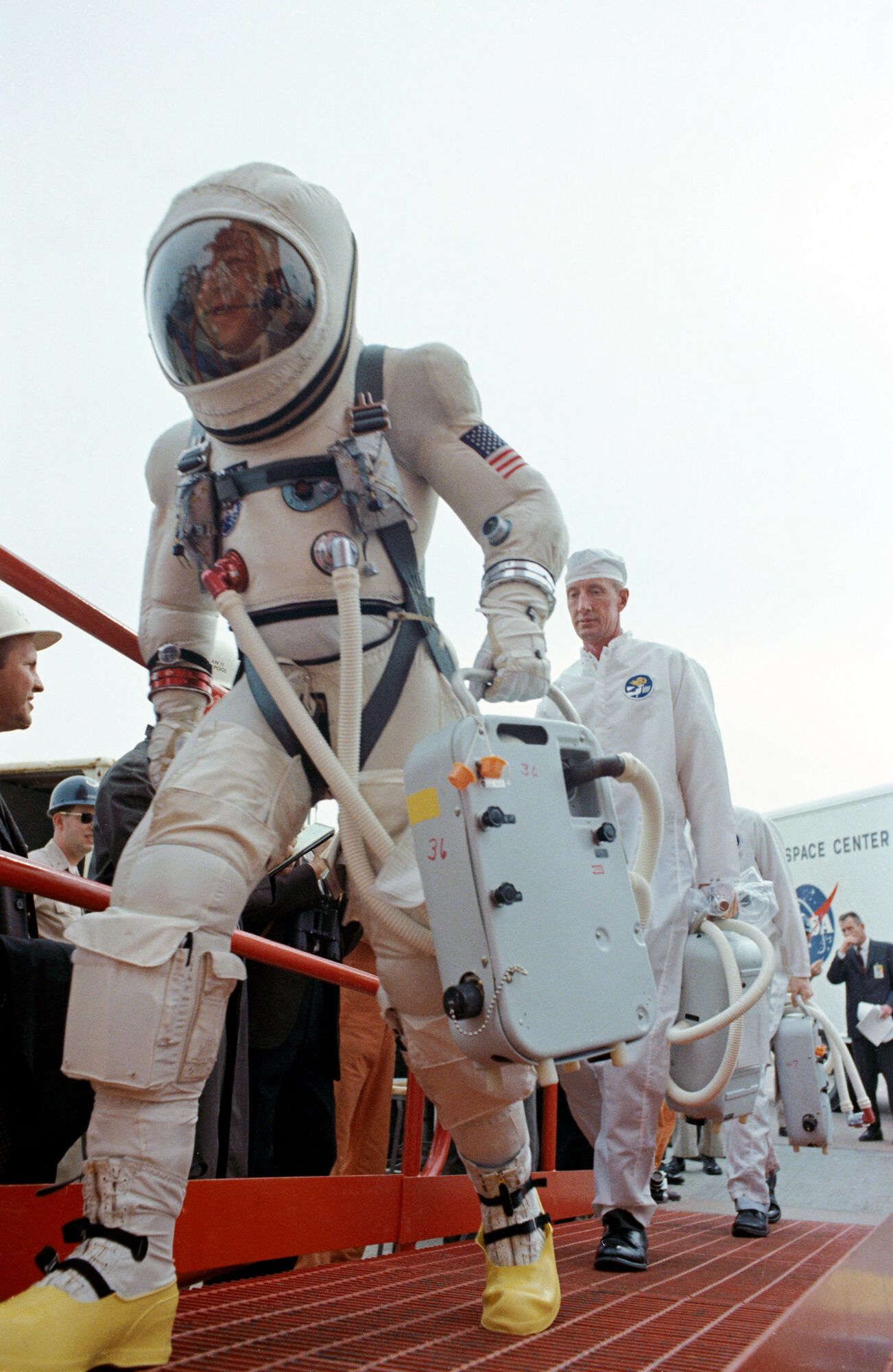
The Gemini 7 mission was full of important milestones; the first crewed space rendezvous, the first long-duration flight, the first flight astronauts were allowed to take off their spacesuits, and it was the first flight where both astronauts slept and ate at the same time. A number of groundbreaking milestones that seem standard now, were once at the forefront of innovation. Truly, the Gemini 7 mission was an unprecedented success in terms of firsts, and paved the way for future missions and their success.
Gemini 7 was initially intended to fly after Gemini 6; however, the original Gemini 6 mission was canceled after a failure during the launch of the Agena Target Vehicle with which it was meant to rendezvous and dock. The rendezvous objective was so vital that it was decided that the alternate Gemini 6A mission launched together with Gemini 7, with the latter being used as the rendezvous target.
The original objectives of Gemini 7 changed minimally with these new plans. It was always designed to be a long-duration flight, which would examine the effects of being in space for fourteen days on the human body. This mission was double the length of time that anyone had been in space. It was on record as the longest spaceflight for five years until the Soyuz 9 mission in 1970 and was the longest crewed space flight in U.S. history until Skylab 2 in 1973.
NASA was required to solve some of the long-duration space flight problems during this mission, such as waste stowage and timing their workday to match the primary ground crews. To do this, both astronauts worked and slept simultaneously. Twenty experiments were conducted during Gemini 7, which was the most of any Gemini mission. The tests included evaluating the G5C, a lightweight spacesuit. Unfortunately, the G5C was uncomfortable to wear in the spacecraft's cramped and hot quarters and was even more uncomfortable when worn too long. On the eleventh day, the mission reached a high point with the rendezvous with Gemini 6A.
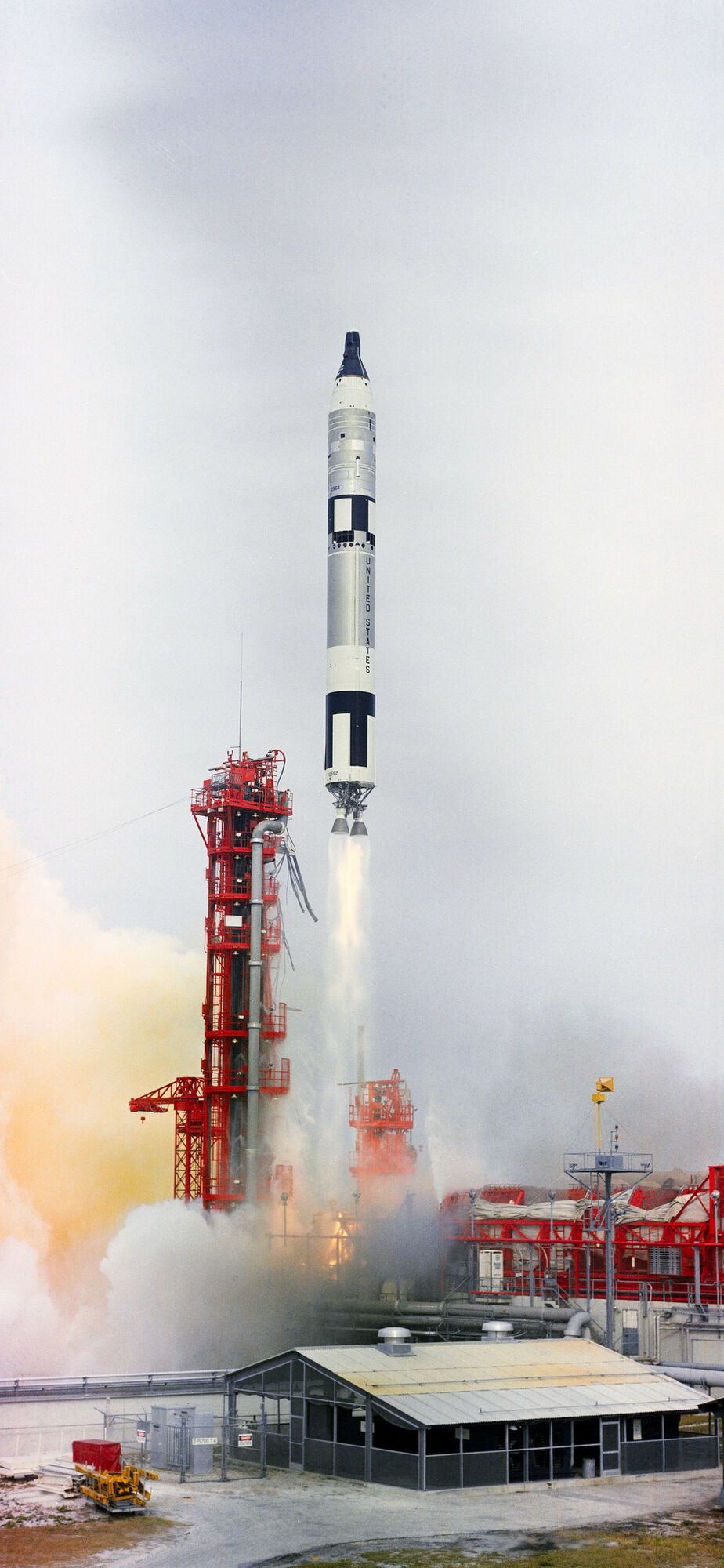
Borman and Lovell spent the rest of their first day in space doing various experiments and eating their first meal. Unlike previous missions, their sleep periods were scheduled simultaneously, and because of this, they were able to get some sleep. They were awoken the next day and given the news, including two airliners colliding over New York. For the first time, one of the crew members was allowed to take off his suit during the flight. Borman and Lovell had planned to take them off two days into the mission when they were satisfied that the environmental system worked correctly. The managers at NASA said that at least one crew member had to be wearing a suit at all times and disagreed with the idea of both men going without the suit. Borman agreed to let Lovell stay out of his, as Lovell was the larger of the two, and Borman wore his suit and sweated profusely. Getting in and out of the suit took an extraordinary amount of effort, especially in space equivalent to that of a car's front seat.
Later, the flight controllers ordered Lovell to put on his suit and Borman to get out of his, as doctors wanted to see the effects on both astronauts. After 148 hours, Borman was able to cool down by taking off his suit. Eventually, the managers decided that there was little benefit in having the crew members suited and allowed both to go without suits. This greatly improved the mobility and comfort inside the spacecraft. Lovell and Borman had improved personal hygiene during their mission compared to previous Gemini missions. Lovell and Borman showered with an anti-dandruff shampoo for two weeks before the flight to curb their predecessors' problems with skin flakes accumulating inside the spacecraft. Removing the pressure suits in-flight kept their skin moist and less prone to drying out and causing irritation. The astronauts were also supplied with sanitation wipes, which were extremely beneficial to them for cleanliness.
The astronauts had performed four orbital adjustments after five days and burns that put them in a circular orbit, which could have lasted for at least 100 days — providing ample stability for the passive target during a space rendezvous. Gemini 7, on their 31st orbit, watched the underwater launch of a Polaris missile from the submarine USS Benjamin Franklin. Heeding the advice of Pete Conrad, both astronauts took books along to read. Lovell read Drums along the Mohawk by Walter D. Edmonds, and Borman read Roughing It by Mark Twain.
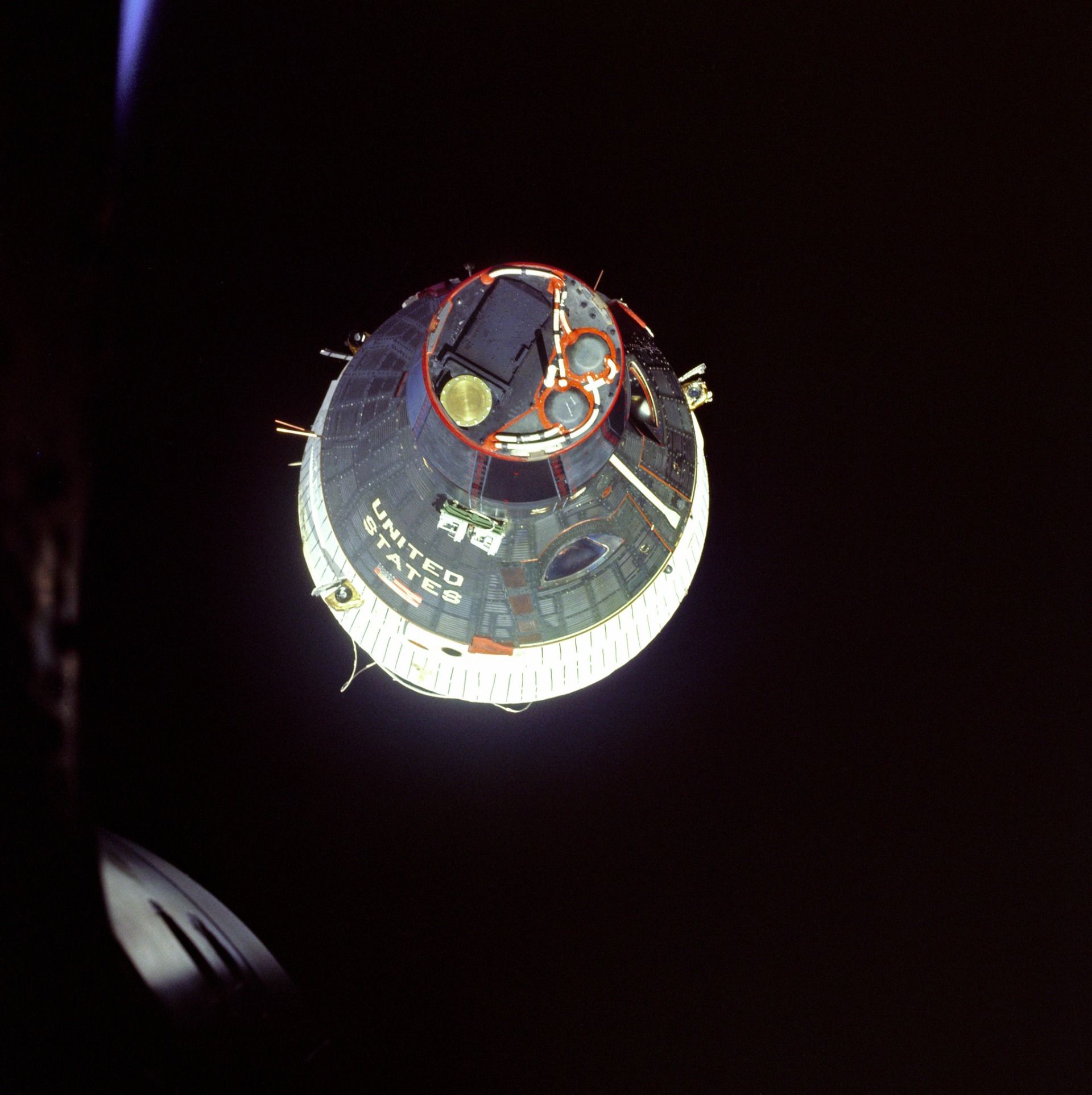
The excitement of spaceflight had worn off for the crew of Gemini 7 by this time. The two men had spent nearly 11 days in space and knew they had three days left. After the rendezvous incentive was gone, and they were doing little more than drifting around the Earth. During the last three days, a few malfunctions began. As with Gemini 5, some of the thrusters stopped working. After the flight, this was traced to an old type of laminate in the thrust chamber. The fuel cells started to only give a partial amount of power on the 12th day; however, the remainder of the flight was sustained by the ship's batteries. Finally, on the last day of the mission, the crew began to store everything for re-entry. After 14 days in space, the retro-rockets worked perfectly. Gemini 7 landed within 6.4 nautical miles of its landing point target.
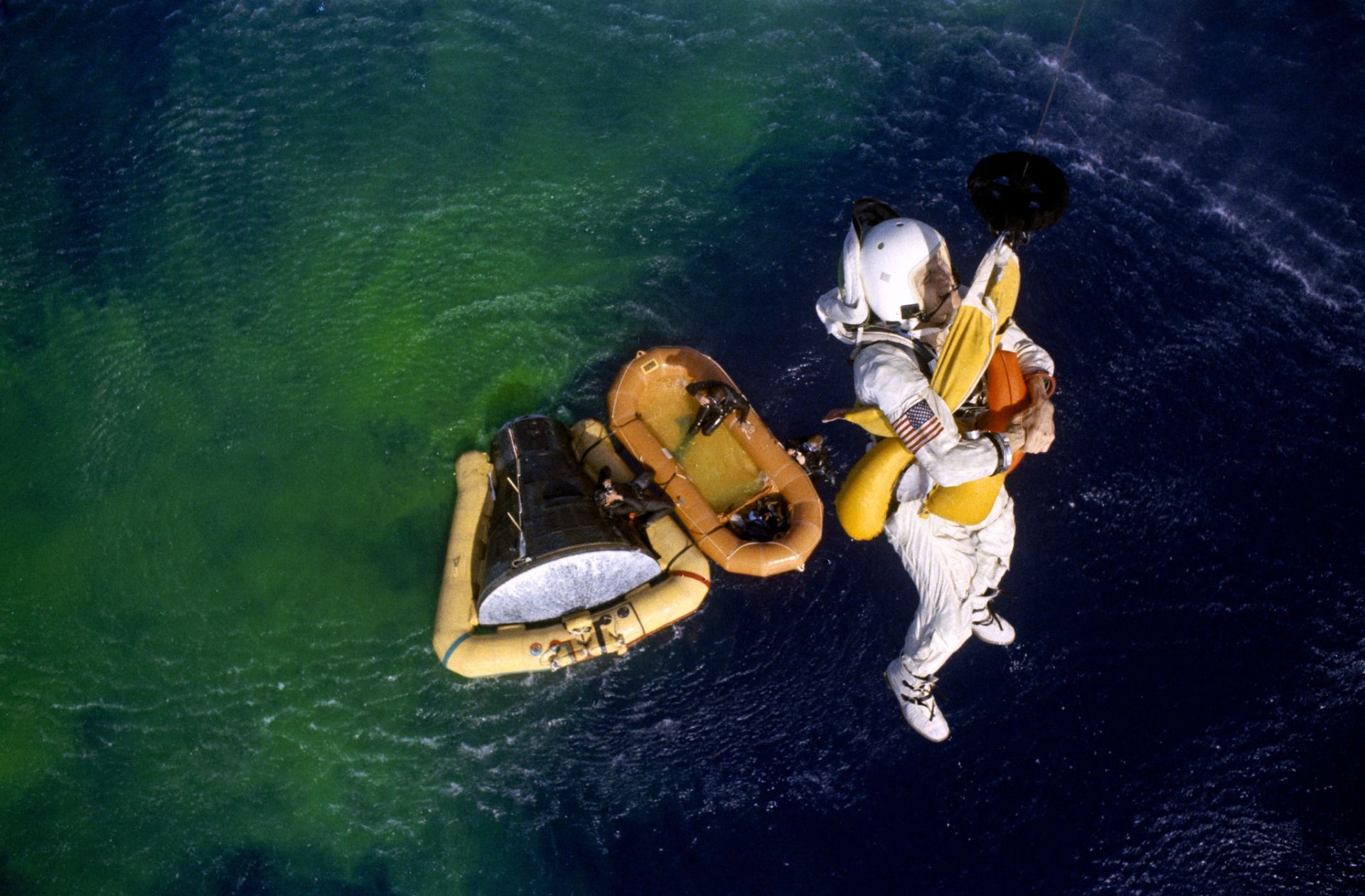
In the post-flight debriefing, Borman and Lovell noted that the food rations had generally been of good quality. However, they disliked and advised against using the freeze-dried protein bites. They also suggested more breakfast items to avoid bite-sized food that easily produced crumbs and improve the packaging of items. They often found it challenging to remove the tightly-packed food containers. Gemini 7 had a more extensive supply of food than previous flights because of the lengthy mission. Additionally, some of the food had not been stowed correctly in correlation to the day they were supposed to be eaten. They also objected to the required recording of every use of drinking water and instead argued that they could instead use the meter on the water hose to record the amount used.
